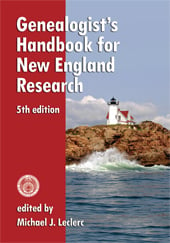 More than the other New England states, Connecticut has kept its records in a variety of jurisdictions. Probate records can be particularly difficult to navigate. For Connecticut Colony, after 1639, estates were in the jurisdiction of the Particular Court (sometimes called the “Quarterly Court”). The Particular Courts were abolished with the new colony charter in 1662 and replaced by the Court of Assistants.
More than the other New England states, Connecticut has kept its records in a variety of jurisdictions. Probate records can be particularly difficult to navigate. For Connecticut Colony, after 1639, estates were in the jurisdiction of the Particular Court (sometimes called the “Quarterly Court”). The Particular Courts were abolished with the new colony charter in 1662 and replaced by the Court of Assistants.
In 1666, the General Assembly established the original four counties of Connecticut – Hartford, New London, New Haven, and Fairfield. The Court of Sessions for these four county courts handled probate records until 1698. In that year specific probate districts were created for each of these four counties. Additional probate districts were created from 1719 on, often for a larger town and nearby towns, not always in the same county. Beginning in 2011 the number of probate districts was reduced from a high of 131 to 54.
Many of the probate records created prior to the formation of probate courts have been transcribed and published. The very useful Probate Estate Papers Index covers probate packets from the mid-1600s to 1948. The Family History Library in Salt Lake City microfilmed all estate papers (such as wills, administrations, and inventories) up to 1880, and most to 1915. Important probate documents were also transcribed by town clerks into probate volumes available at the town hall. (For more information, visit Barbara Jean Mathews’ article on Connecticut probate records at AmericanAncestors.org, as well as the Connecticut State Library Guide to Probate Records.)
Court records have always been kept at the county level. The earliest court records were kept under the jurisdiction of the Particular Court from 1639 until 1663. County courts began in 1665 with the original four counties; the Court of Assistants maintained trial court records from 1665 until 1711, except for the period of royal governor Sir Edmund Andros, in 1687 and 1688, where probate records were filed with the Particular Court, and estates valued at more than £50 were filed in Suffolk County, Massachusetts. The Superior Court replaced the Court of Assistants in 1711, with districts at the county level. Matters not heard at the Superior Court level were tried at the county level. These courts existed until 1855 and their records are primarily available at the Connecticut State Library in Hartford.
After 1855, the responsibilities of the County Courts were divided between superior courts and justice courts. Courts of Common Pleas handled what the justice and superior courts did not, until in 1961 the justice courts were abolished. The current system has district courts, county superior courts, and the State Supreme Court. Courts today generally keep criminal and civil records, including divorces and paternity cases.
All of these overlapping jurisdictions can be confusing, and their nomenclature distracting, but learning how to navigate through Connecticut’s historic records will reward the genealogical researcher.
Share this:
About Christopher C. Child
Chris Child has worked for various departments at NEHGS since 1997 and became a full-time employee in July 2003. He has been a member of NEHGS since the age of eleven. He has written several articles in American Ancestors, The New England Historical and Genealogical Register, and The Mayflower Descendant. He is the co-editor of The Ancestry of Catherine Middleton (NEHGS, 2011), co-author of The Descendants of Judge John Lowell of Newburyport, Massachusetts (Newbury Street Press, 2011) and Ancestors and Descendants of George Rufus and Alice Nelson Pratt (Newbury Street Press, 2013), and author of The Nelson Family of Rowley, Massachusetts (Newbury Street Press, 2014). Chris holds a B.A. in history from Drew University in Madison, New Jersey.View all posts by Christopher C. Child →